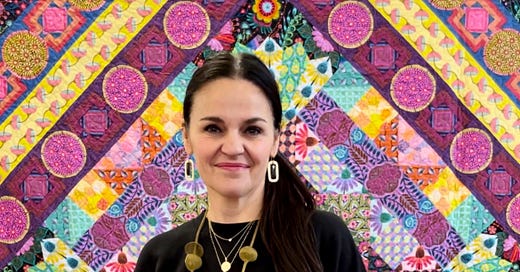Cooking in Full Color: Anna Maria Horner - No. 216
Flowers, nature, and color creep into the fabrics she designs. Plus her family’s Greek cheese tiropita recipe
IF YOU’VE EVER SEEN A FRIDA KAHLO painting or better yet, a room full of her paintings, then you know the power of color. Kahlo painted her life in symbolic hues full of drab but also light giving greens, true blues, frantic yellows, and visceral reds. The same can be said for all artists really, from the famous ones of history to arti…




